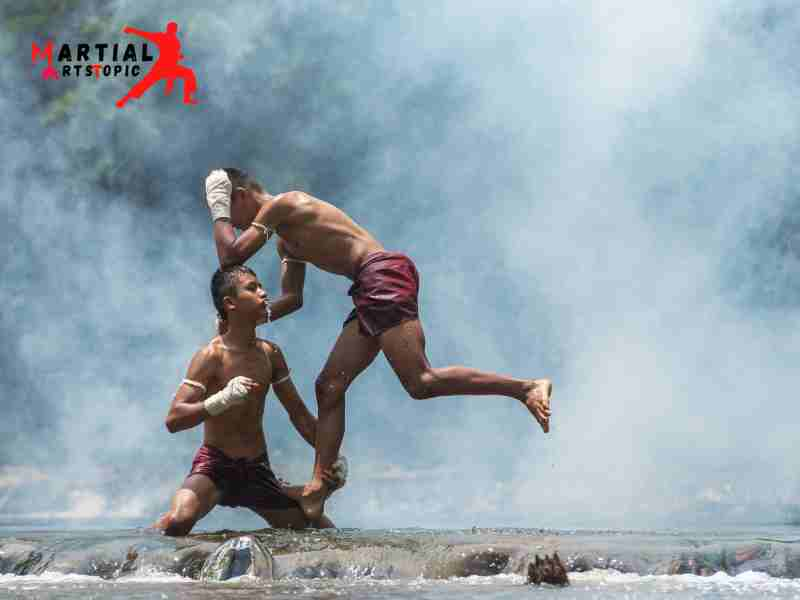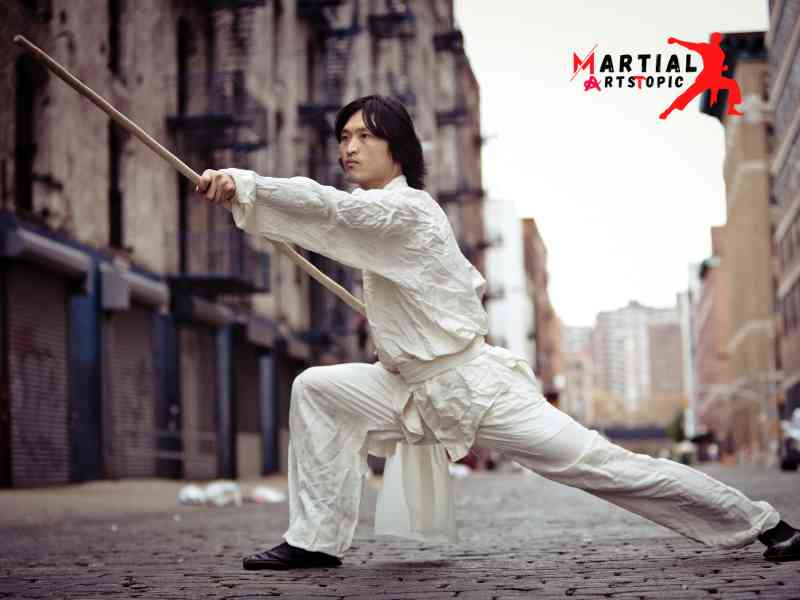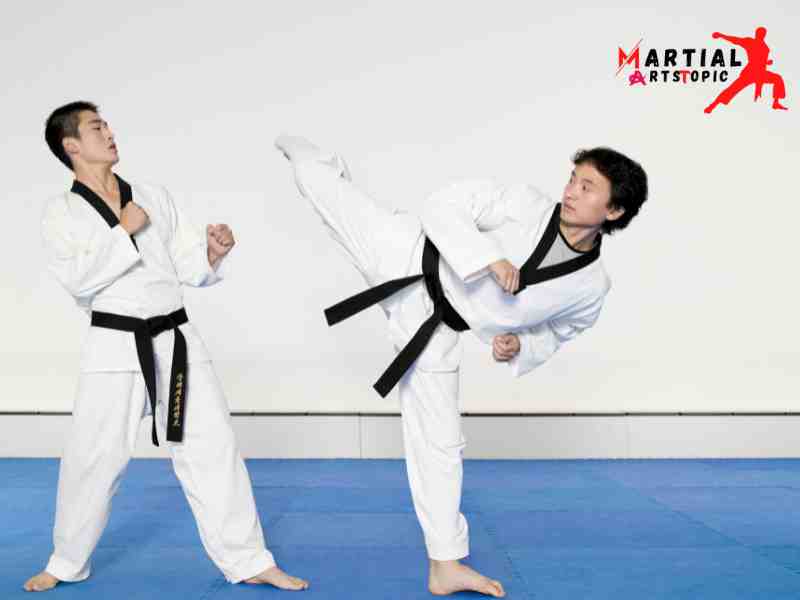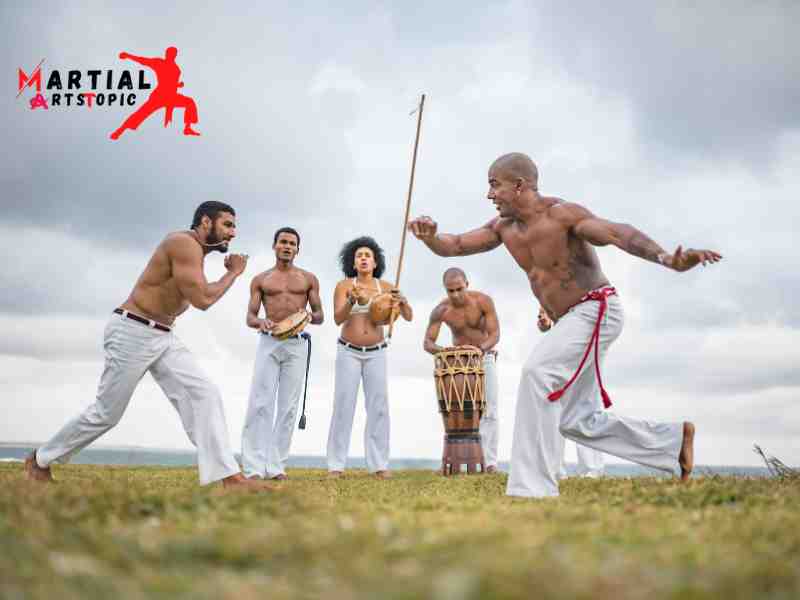
Is Martial Arts a Sport or Something More?
Is Martial Arts a Sport: The world of martial arts is vast and diverse, with a rich history that spans across cultures and continents. From ancient traditions to modern combat sports, martial arts have captivated and inspired people for centuries. Whether you’re a beginner, looking to learn self-defense or an experienced practitioner seeking to enhance your skills, there is a martial art for everyone.
Definition of a sport
Martial arts, combat training and self-defense, is often debated whether it qualifies as a sport. Martial arts encompasses a variety of disciplines, such as karate, judo, taekwondo, and Brazilian Jiu-Jitsu, which require physical skill, discipline, and strategy. While some argue that martial arts are more of a traditional practice or art form, many consider it to be a sport because of its competitive nature and organized tournaments. Whether we classify martial arts as a sport ultimately depends on one’s definition and perspective.
Common characteristics of sports (competition, physical exertion, skill, rules, organization, etc.)
Martial arts possess several common characteristics of sports, including competition, physical exertion, skill, rules, and organization. With its focus on combat techniques and disciplined training, martial arts require athletes to compete against each other, showcasing their skills and abilities. Practitioners engage in intense physical exertion, honing their strength, agility, and flexibility. Martial arts also adhere to specific rules and regulations, ensuring fair and structured competition.
Martial Arts as a Competitive Activity
Someone widely recognized martial arts as a competitive activity and often debated whether we should consider it a sport. With its rich history and cultural significance, martial arts encompasses a range of disciplines, including karate, taekwondo, judo, and more. As a physically demanding activity, martial arts require strength, agility, and skill, making it highly competitive. Some argue that martial arts should be classified as a sport because of its competitive nature and structured rules. Whether they practice it for self-defense or as a means of physical fitness, martial arts undeniably showcase athletes’ dedication and athleticism, blurring the line between sport and art.
Explanation of the competitive nature of martial arts
Martial arts is a highly competitive discipline that has gained recognition as both a sport and self-defense. With its roots deeply embedded in ancient traditions, martial arts require rigorous training, discipline, and dedication. Athletes taking part in martial arts competitions showcase their skills, strength, agility, and mental acuity while engaging in various combat techniques. From karate to taekwondo, martial arts offer a platform for individuals to not only test their physical prowess but also show their strategic thinking and resilience. Whether it is in the ring or on the mat, the competitive nature of martial arts pushes athletes to their limits, making it a challenging and captivating sport.
Different types of martial arts competitions (tournaments, sparring matches, etc.)

Martial arts competitions encompass various types of events, including tournaments and sparring matches. These competitions serve as platforms for practitioners to showcase their skills, technique, and athleticism. While some may question whether martial arts is considered a sport, these competitions show the competitive nature and athletic prowess required in martial arts. Regardless of the specific discipline, such as karate, taekwondo, or jiu-jitsu, these competitions provide opportunities for athletes to test their abilities and strive for victory. Whether it’s a traditional tournament or a thrilling sparring match, martial arts competitions offer an interesting display of skill and athleticism.
Examples of well-known martial arts competitions (e.g., UFC, Karate World Championships)
Martial arts competitions have gained immense popularity in the sporting world. From the widely recognized Ultimate Fighting Championship (UFC) to the prestigious Karate World Championships, these events showcase the skill, strength, and discipline of martial artists from around the globe. Many individuals may wonder, “Is martial arts a sport?” The answer is a resounding yes. Martial arts require rigorous training, strategizing, and physical exertion, making it a highly competitive sport. Whether it’s the intense grappling and striking action of UFC or the precision and technique displayed in the Karate World Championships, these well-known martial arts competitions captivate audiences worldwide.
Physical Exertion in Martial Arts
Physical exertion is a fundamental aspect of martial arts training. It involves pushing your body to its limits, building strength, endurance, and flexibility. Through rigorous training sessions, practitioners develop their physical capabilities, enhancing their overall health and well-being. The sweat and effort put into each session are essential for mastering martial arts techniques and improving performance. Embracing physical exertion not only strengthens the body but also instills discipline and mental fortitude, essential qualities for success in martial arts. It’s through pushing past physical limits that practitioners discover their true potential and achieve remarkable feats.
Description of the physical demands of martial arts training
Martial arts training is an intense physical activity that requires strength, agility, and endurance. Whether it is karate, taekwondo, or Brazilian Jiu-Jitsu, martial arts can be considered a sport because of its competitive nature and the physical demands it places on practitioners. The training involves various exercises, including punches, kicks, and grappling techniques, which require exceptional coordination and flexibility. Martial artists also engage in rigorous conditioning exercises, such as running, jumping, and weightlifting, to enhance their overall physical fitness. The discipline and dedication required in martial arts training make it a challenging yet rewarding sport for individuals seeking a physically demanding activity.
Importance of fitness and conditioning in martial arts
The importance of fitness and conditioning in martial arts cannot be overstated. Martial arts, which can be considered a sport, require a high level of physical fitness and conditioning in order to excel. Whether it is in karate, taekwondo, or any other martial art form, athletes must possess strength, agility, endurance, and flexibility to perform at their best. Fitness training plays a crucial role in enhancing overall performance, reducing the risk of injury, and improving mental focus. By incorporating regular workouts and conditioning exercises into their training routine, martial artists can optimize their physical abilities and achieve their fullest potential in the sport.
Skill Development in Martial Arts
Skill development in martial arts is a crucial aspect of training that requires dedication, discipline, and consistent practice. Whether you’re a beginner or a seasoned practitioner, honing your skills is an ongoing process that demands focus and perseverance. By mastering fundamental techniques, refining your form, and embracing new challenges, you can elevate your abilities and reach additional levels of proficiency. Embracing a growth mindset and seeking guidance from experienced instructors can also greatly enhance your skill development journey. Remember, progress may not always be linear, but every step forward contributes to your overall improvement and proficiency in martial arts.
The skill requirements in martial arts (techniques, forms, strategies, etc.)
The skill requirements in martial arts encompass a wide range of techniques, forms, and strategies. Martial arts, often debated as a sport, demands proficiency in various areas such as striking, grappling, and self-defense techniques. Athletes taking part in martial arts competitions strive to master different forms and styles, including karate, taekwondo, judo, and Brazilian Jiu-Jitsu. These disciplines cause not only physical strength, agility, and coordination but also mental focus and discipline. Whether martial arts are considered a sport or not, the skillful execution and dedication required to excel in this discipline.
Similarities between skill development in martial arts and other sports
Skill development in martial arts shares several similarities with skill development in other sports. While some people may debate whether we should classify martial arts as a sport, honing skills in martial arts is undeniably similar to that in traditional sports. Just like in any sport, martial arts practitioners dedicate hours of training, focusing on techniques, coordination, strength, and agility. The progression in martial arts also involves setting goals, following a structured training program, and continually challenging oneself. Whether it’s improving hand-eye coordination in basketball or perfecting a punch in taekwondo, the commitment and dedication required for skill development in martial arts are comparable to those in other sports.
Importance of training and practice in honing martial arts skills
Martial arts, often debated as a sport, require dedicated training and practice to master the skills involved. It is important to understand the significance of training and practice in honing one’s martial arts abilities. Regular training not only helps to improve physical strength and flexibility but also enhances mental focus, discipline, and coordination. By consistently practicing various techniques and forms, martial artists can develop their agility and reflexes, enabling them to excel in combat. Emphasizing the importance of training and practice in martial arts ensures continuous growth and improvement in both physical and mental aptitude.
Rules and Organization in Martial Arts
In martial arts, rules and organization are essential for maintaining a safe and respectful training environment. Each discipline has its own set of rules and regulations, which are designed to ensure fair competition and promote discipline among practitioners. Whether it’s the etiquette observed in traditional dojos or the specific regulations governing tournaments and sparring sessions, adhering to these guidelines is crucial for the smooth functioning of the martial arts community. Additionally, the organizational structure within martial arts schools, associations, and federations provides a framework for learning, progressing, and competing. This structure not only fosters a sense of community and camaraderie but also allows individuals to set and achieve personal goals within the martial arts realm.
The rules and regulations governing martial arts competitions
A set of rules and regulations that ensure fair play and the safety of the participants governs martial arts competitions. These guidelines outline the boundaries and techniques that can be used during matches, promoting a competitive yet controlled environment. Martial arts, including popular styles like karate, judo, and taekwondo, are widely recognized as sports because of their competitive nature and organized tournaments. These events require athletes to showcase their skills, strength, and discipline, while adhering to the rules set forth by the governing bodies. Whether it’s strikes, throws, or grappling techniques, martial arts competitions provide a platform for athletes to show their prowess and compete at the highest level.
Organizations and governing bodies overseeing martial arts
Organizations and governing bodies that supervise martial arts include the International Judo Federation and the World Taekwondo Federation. These associations play a crucial role in ensuring the proper regulation and development of martial arts as a sport. They provide a platform for athletes to compete at an international level and set standards for training, techniques, and safety. With their guidance, we can recognize martial arts as both a traditional discipline and a competitive sport, appealing to individuals seeking physical fitness, self-defense skills, and personal growth.
Taekwondo

Taekwondo, a popular martial art, is widely recognized as both a sport and self-defense. With its origins in Korea, Taekwondo combines various high-kicking techniques, punches, and blocks, making it an effective combat sport. Known for its emphasis on speed, power, and agility, Taekwondo has gained recognition as an Olympic sport, further solidifying its status as a competitive athletic activity. Whether you’re looking to improve physical fitness, learn self-defense skills, or compete at a professional level, Taekwondo offers a dynamic and challenging experience for individuals of all ages and abilities.
Judo
Judo, a popular martial art, is often debated whether it qualifies as a sport. With its origins in Japan, Judo combines physical agility, technique, and mental discipline. Many argue that Judo meets the criteria to be classified as a sport because of its competitive nature and organized tournaments. Athletes taking part in Judo engage in intense physical training, honing their skills in throws, grappling, and submission techniques. Whether you consider Judo a martial art or a sport, there’s no denying the dedication and athleticism required to excel in this dynamic discipline.
Brazilian Jiu-Jitsu (BJJ)
BJJ is a ground-based martial art that emphasizes submissions and grappling techniques. It is known for its effectiveness in real-life self-defense situations and has gained popularity through mixed martial arts (MMA) competitions.
Muay Thai
Muay Thai, also known as Thai boxing, is a popular and dynamic martial art that originated in Thailand. Combining strikes with clinching techniques, Muay Thai is not only a highly effective form of self-defense but also a competitive sport. Many enthusiasts wonder, “Is martial arts a sport?” The answer is yes, and Muay Thai is a prime example. With its rigorous training and rules, Muay Thai has developed into a recognized sport globally, attracting both athletes and spectators alike. Whether you’re interested in the physical fitness benefits or the thrill of competition, Muay Thai provides an exhilarating experience that embodies both the art and the sport of martial arts.
Boxing
Boxing, widely regarded as a martial art, is an exhilarating combat sport that requires strength, agility, and strategy. Many enthusiasts often wonder, “Is martial arts a sport?” Well, boxing certainly fits the bill. With its roots in ancient Greece, this dynamic discipline has strengthened into a regulated sport, captivating audiences worldwide. Known for its intense punches and defensive techniques, boxing requires athletes to refine their skills through rigorous training and disciplined practice. Whether you’re a participant or a spectator, boxing offers an adrenaline-fueled experience that combines the art of self-defense with the competitive nature of a sport.
Krav Maga
Krav Maga, a self-defense system developed by the Israeli military, is often questioned whether it falls under the category of a martial art or a sport. While some may argue that it is a martial art because of its focus on combat techniques and self-defense strategies, others believe it is more of a practical self-defense system rather than a traditional sport. Regardless of the ongoing debate, Krav Maga offers individuals the opportunity to learn valuable skills to protect themselves in real-life situations. Whether you consider it a martial art or a sport, the benefits of training in Krav Maga are undeniable.
Kung Fu
Is martial arts a sport? Kung Fu, a popular form of martial arts, has I have debated long as both an art form and a sport. While some argue that its emphasis on self-defense techniques and ancient philosophies sets it apart from traditional sports, others believe that the physicality and competitive nature of Kung Fu make it a legitimate sport. Whether you consider it an art or a sport, the discipline, skill, and athleticism required to master Kung Fu. So, is martial arts a sport? The answer may lie in the beholder’s eye, but one thing is for sure – Kung Fu is a fascinating and powerful practice that continues to captivate practitioners and spectators alike.
Capoeira

Originating in Brazil, Capoeira combines martial arts, acrobatics, and dance-like movements. Its rhythmic and flowing style characterized it, often accompanied by music and song.Capoeira, a unique blend of martial arts and dance, has been gaining popularity as a captivating sport. Combining elements of acrobatics, music, and self-defense, capoeira is not just an art form but also a competitive sport. With its origins in Brazil, capoeira has developed into a dynamic discipline that requires strength, flexibility, and agility. Often referred to as a game, capoeira challenges participants to showcase their skills through fluid movements, kicks, and spins. Whether it’s a display of athleticism or a cultural expression, capoeira has carved its place in the realm of martial arts as a captivating and exciting sport.
Kickboxing
Kickboxing is a popular martial arts sport that combines elements of boxing and karate. With its fast-paced and dynamic nature, kickboxing challenges both the mind and body, making it an excellent choice for those looking for a challenging workout. But is kickboxing considered a sport? The answer is a resounding yes! Kickboxing involves intense physical training, strategic techniques, and competitive matches, making it a recognized and respected sport worldwide. Whether you’re a beginner or a seasoned athlete, kickboxing offers a thrilling and rewarding experience that combines fitness, self-defense, and the excitement of competitive sports. So, lace up your gloves and step into the ring – kickboxing is definitely a sport worth trying!
Wrestling
Wrestling, often referred to as a form of martial arts, is a highly competitive sport that has captivated audiences for centuries. With its origins dating back to ancient times, wrestling has developed into a modern-day athletic spectacle that combines strength, technique, and strategy. Whether it’s freestyle wrestling or Greco-Roman wrestling, this physically demanding sport requires athletes to grapple and pin their opponents to the mat, showcasing their agility and skill. So, is martial arts a sport? While wrestling shares similarities with martial arts in terms of combat techniques, they indeed considered it a sport because of its competitive nature and organized rules and regulations.
Aikido
Aikido, a traditional Japanese martial art, is often debated whether it falls under the category of a sport. Is martial arts a sport? While some may argue that it doesn’t fit the conventional definition of a sport, Aikido combines physical techniques, mental discipline, and strategic movements, making it a unique and dynamic activity. Aikido practitioners engage in rigorous training sessions where they learn self-defense techniques and cultivate a sense of balance, flexibility, and focus. So, whether or not you consider Aikido a sport, its physical and mental benefits.
Karate Do
Karate-Do, commonly known as martial arts, is a dynamic and disciplined sport that encompasses physical and mental training. Many people often wonder, “Is martial arts a sport?” The answer is a resounding yes. Martial arts, including Karate-Do, involve rigorous physical activity and competitive bouts, making it a recognized sport worldwide. However, it goes beyond just sport; Karate-Do is a way of life that encourages self-discipline, respect, and personal growth. Whether you are looking for a sport to enhance your fitness level or seeking to cultivate mental strength, Karate-Do offers a holistic approach that combines physical exertion and mental focus.
Hapkido
Hapkido, a traditional Korean martial art, has gained popularity in recent years as it combines self-defense techniques with physical fitness. Many people wonder, “Is martial arts a sport?” The answer is yes! Hapkido, along with other martial arts disciplines, is considered a sport because of its competitive nature and the physical skills required. Practitioners of Hapkido engage in various techniques, such as strikes, joint locks, and throws, making it an exciting and dynamic sport. Whether you’re looking to improve your self-defense skills or simply stay fit, Hapkido is an excellent choice that offers the best of both worlds.
Recap of the main points discussed
Hapkido, a traditional Korean martial art, has gained popularity in recent years as it combines self-defense techniques with physical fitness. Many people wonder, “Is martial arts a sport?” The answer is yes! Hapkido, along with other martial arts disciplines, is considered a sport because of its competitive nature and the physical skills required. Practitioners of Hapkido engage in various techniques, such as strikes, joint locks, and throws, making it an exciting and dynamic sport. Whether you’re looking to improve your self-defense skills or simply stay fit, Hapkido is an excellent choice that offers the best of both worlds.
Conclusion
Throughout our discussion, we delved into several key points. First, we examined the importance of effective communication in the workplace, highlighting how it fosters collaboration, boosts productivity, and minimizes misunderstandings. Second, we explored the significance of setting clear goals and objectives, emphasizing how they provide direction and motivation for individuals and teams. We discussed the benefits of embracing diversity and inclusion, recognizing how it enhances creativity, innovation, and overall organizational performance. We touched upon the value of continuous learning and development, acknowledging that it enables individuals to adapt to changing circumstances and stay ahead in a competitive environment. Last, we emphasized the need for effective leadership, stressing how it inspires and guides employees towards achieving shared goals. Overall, these main points underscored the importance of cultivating a positive and inclusive work environment that encourages open communication, goal alignment, continuous learning, and strong leadership.
